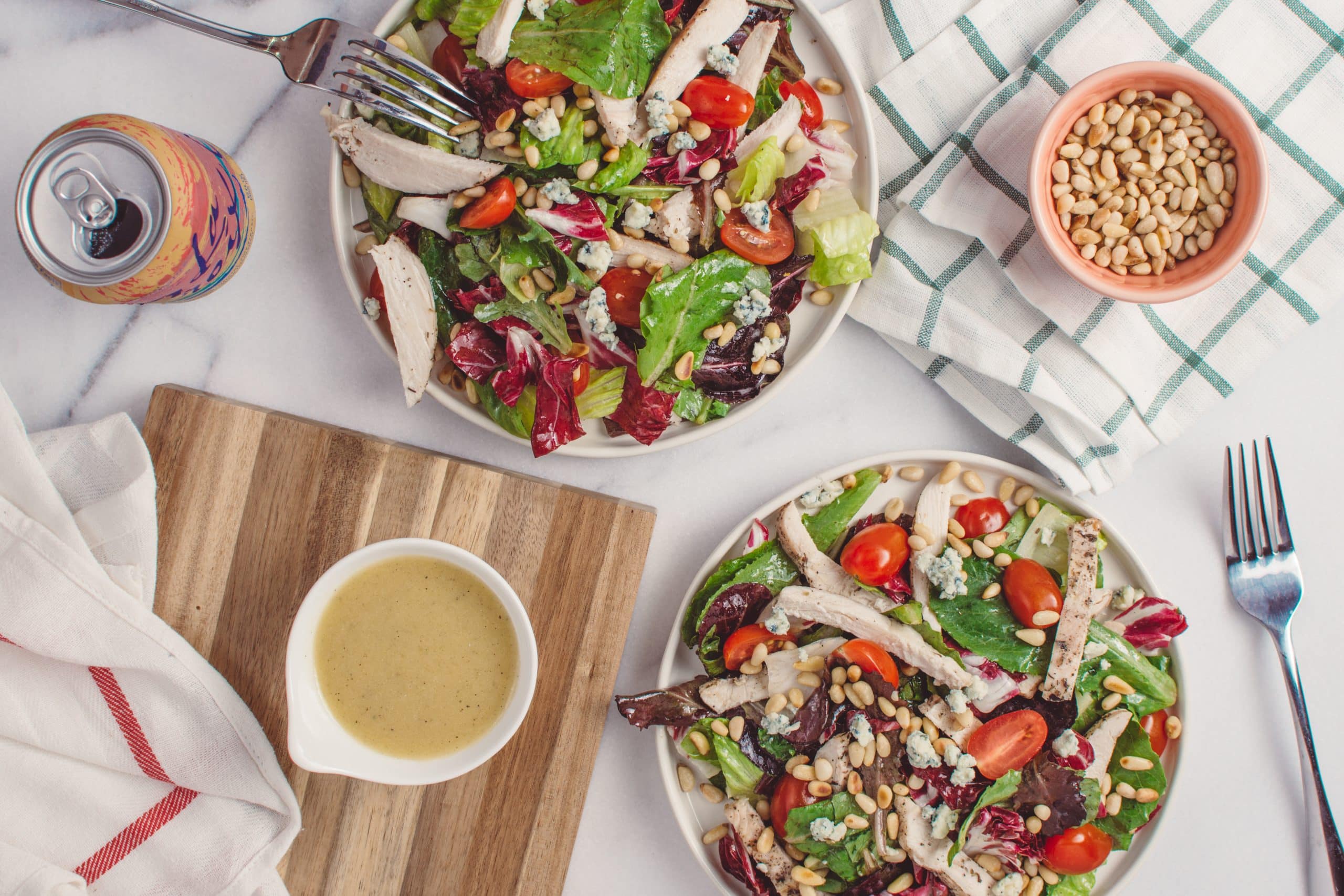What are the essentials for a keto diet meal plan?

Understanding the fundamentals of a ketogenic, or keto, diet, is crucial for anyone considering this low-carb, high-fat dietary approach. A keto diet, known for its minimal carbohydrate and high fat intake, is a popular choice for many health enthusiasts aiming to lose weight, control blood sugar levels, or improve general health. In the following sections, we’ll delve deeper into the essentials of a keto meal plan, including the types of foods to eat and those to avoid.
The Science Behind Keto Diet
Before embarking on a keto diet, it’s important to understand the science behind it. In a nutshell, when you eat very few carbs and increase your intake of fats, your body enters a metabolic state called ketosis. Here, instead of burning glucose for energy (which is derived from carbs), your body burns fat, turning it into ketones, a type of acid your body can use as a fuel source.
Additional reading : How do you make a delicious vegan curry?
A typical keto diet is made up of 70-75% fat, 20-25% protein, and 5-10% carbohydrates. This dietary pattern is far removed from traditional pyramid food groups where grains and other carb-rich foods reign supreme.
High-Fat Foods
High in healthy fats and low in carbs, the keto diet encourages consumption of a variety of foods rich in healthy fats. This doesn’t mean you can load up on any type of fat; the quality of the fat matters. For instance, avocados are a great source of monounsaturated fats and are perfect for a keto diet. They’re also packed with fiber, which can help you feel full and decrease the net carbs you’re consuming.
Also read : What are the best spices to use in indian cooking?
Other sources of healthy fats include fatty fish (like salmon and mackerel), nuts and seeds, olives and olive oil, coconut oil, and butter or cheese from grass-fed animals. The keto diet also allows for the consumption of saturated fats like coconut oil and butter, which have been controversial in the mainstream health community but are considered safe and healthy in the context of a ketogenic diet.
Low-Carb Vegetables and Fruits
Many fruits and vegetables are high in carbs, but there are some lower-carb options which should form a part of your keto meal plan. Leafy green vegetables such as spinach, kale, and lettuce are low in carbs and high in fiber. Other low-carb vegetables include broccoli, cauliflower, zucchini, bell peppers, and cucumbers.
Berries are one of the few fruits that can be enjoyed on a keto diet because of their lower net carb content. They’re high in fiber, which offsets their sugar content, and are packed with antioxidants. Just remember to eat them in moderation.
Protein Sources
Another important part of a keto meal plan is protein. This includes meat, poultry, fish, and eggs. However, be cautious not to overdo it with protein. Though protein is essential for maintaining muscle mass and promoting satiety, too much can knock your body out of ketosis. This is because excess protein can be converted into glucose by the body, which may interfere with the ketosis process.
Go for grass-fed meats, wild-caught fish, and free-range eggs. Non-meat eaters can get protein from sources like tofu, tempeh, and seitan, which are also low in carbs.
Dairy and Alternatives
Dairy is a key component of the ketogenic diet. High-fat dairy products like butter, cream, and cheese are not only delicious but also provide the necessary fats to help keep your body in ketosis. However, not all dairy is created equal. For instance, avoid milk as it is high in lactose, a type of sugar, which can spike your carb intake.
For those who are lactose intolerant or choosing to avoid dairy, there are still plenty of alternatives. Almond milk and coconut milk, for example, are good dairy substitutes with a low net carb content.
Sweeteners and Condiments
While sugar is a big no-no on the keto diet, there are still ways to satisfy your sweet tooth. Natural sweeteners like stevia, erythritol, and monk fruit extract can be used in moderation to sweeten your keto dishes without adding carbs.
As for condiments, it’s essential to check the label for hidden sugars. Many processed sauces and dressings contain added sugars that can quickly exceed your daily carb limit. Instead, opt for homemade dressings using healthy oils, vinegar, and herbs.
In conclusion, adopting a keto diet meal plan requires careful planning and thoughtful food choices. The emphasis should be on high-quality fats, moderate protein, and low-carb fruits and vegetables, with a strict avoidance of high-carb foods and hidden sugars. Making these mindful choices will help you achieve and maintain ketosis, promoting a potentially significant health and weight-loss advantage.
Nuts, Seeds and Legumes
Diversifying your keto meal plan with nuts, seeds, and legumes is crucial. These foods offer a substantial amount of healthy fats, fiber, and protein, aligning perfectly with the keto diet guidelines. Thanks to their high fiber content, the net carbs in these foods are relatively low, making them an ideal keto-friendly choice.
Almonds, pecans, walnuts, and macadamia nuts are some of the most suitable nuts for a keto diet, as they have the lowest net carb content. These nuts offer a healthy dose of monounsaturated fats, which can help to improve heart health. Seeds, such as flaxseeds, chia seeds, and pumpkin seeds, are also excellent choices. They’re packed with fiber, protein, and healthy fats.
Legumes are traditionally thought to be high in carbs, but certain types, like peanuts and soybeans, can be included in moderate amounts in a keto diet. These legumes are high in protein and fiber, which can help to keep you feeling full and satisfied.
Oils and Fats
The keto diet is a high-fat diet, making oils and fats a crucial part of any keto-friendly meal plan. Oils such as olive oil, coconut oil, and avocado oil are rich in healthy fats and are a staple in the keto kitchen.
Olive oil, known for its heart-healthy properties, is high in monounsaturated fats. Coconut oil contains medium-chain triglycerides (MCTs), which can be quickly converted into ketones for energy. Avocado oil is another excellent choice, packed with monounsaturated fats and antioxidants.
Animal fats, such as butter and lard from grass-fed animals, can also be included in a keto diet. These fats not only add flavor to your meals but also help your body to stay in ketosis, promoting weight loss. However, it’s essential to choose high-quality animal fats and to use them in moderation.
Conclusion
Switching to a keto diet can be a significant change, but with careful planning and the right food choices, it can offer numerous health benefits, including weight loss. Building a keto meal plan requires a focus on high-quality, high-fat foods, moderate protein, and low-carb fruits and vegetables.
Stay away from high-carb foods, hidden sugars, and processed items. Instead, fill your grocery list with foods rich in healthy fats like avocados, nuts, seeds, and olive oil, along with grass-fed meats, low-carb fruits and vegetables, and dairy alternatives if needed.
Incorporate natural sweeteners and homemade condiments to maintain flavor without adding extra carbs. Remember, the goal of the keto diet is to enter and stay in ketosis, a state where your body is burning fat for fuel instead of glucose.
By making mindful choices and keeping track of your net carb intake, you can successfully embark on your keto journey. The keto diet is not just a diet, but a lifestyle change that requires commitment and patience. Stick with it, and you’ll likely see results and benefits in terms of weight loss and overall health improvement.
